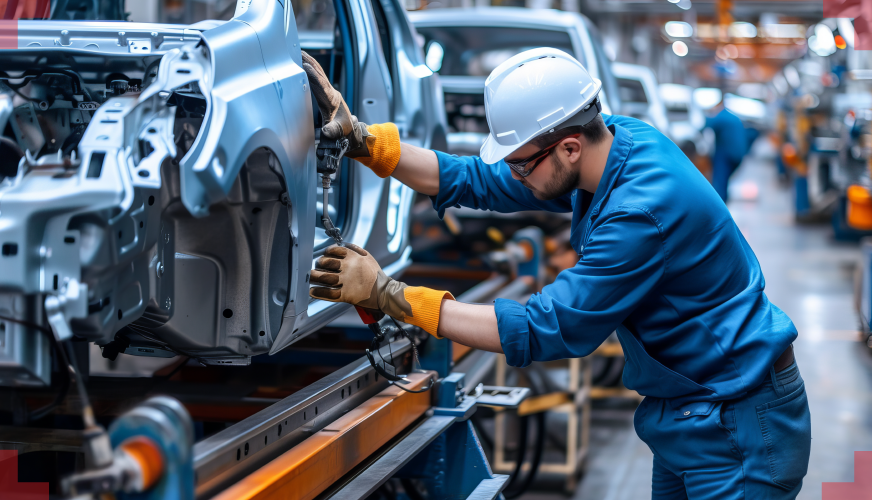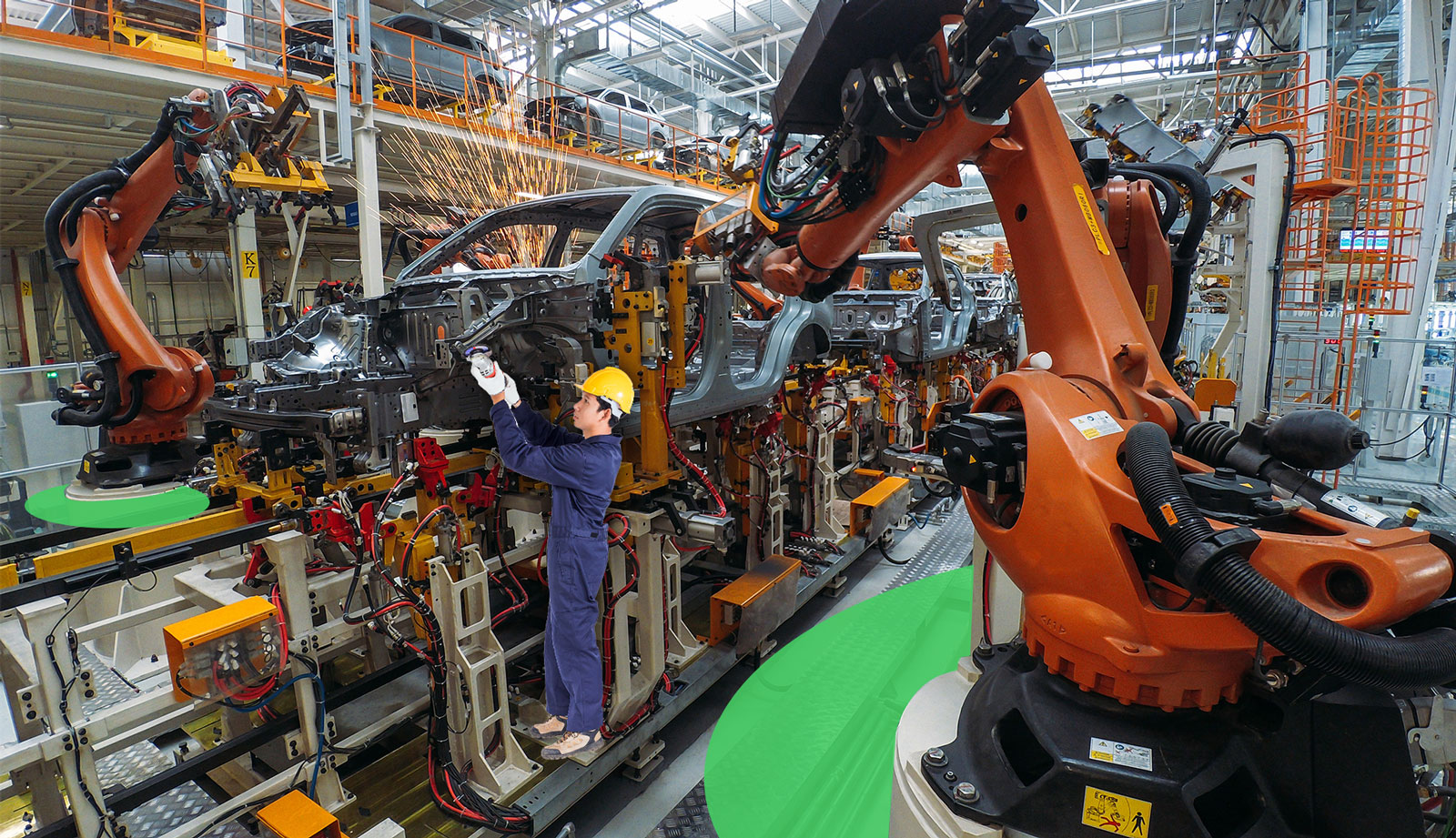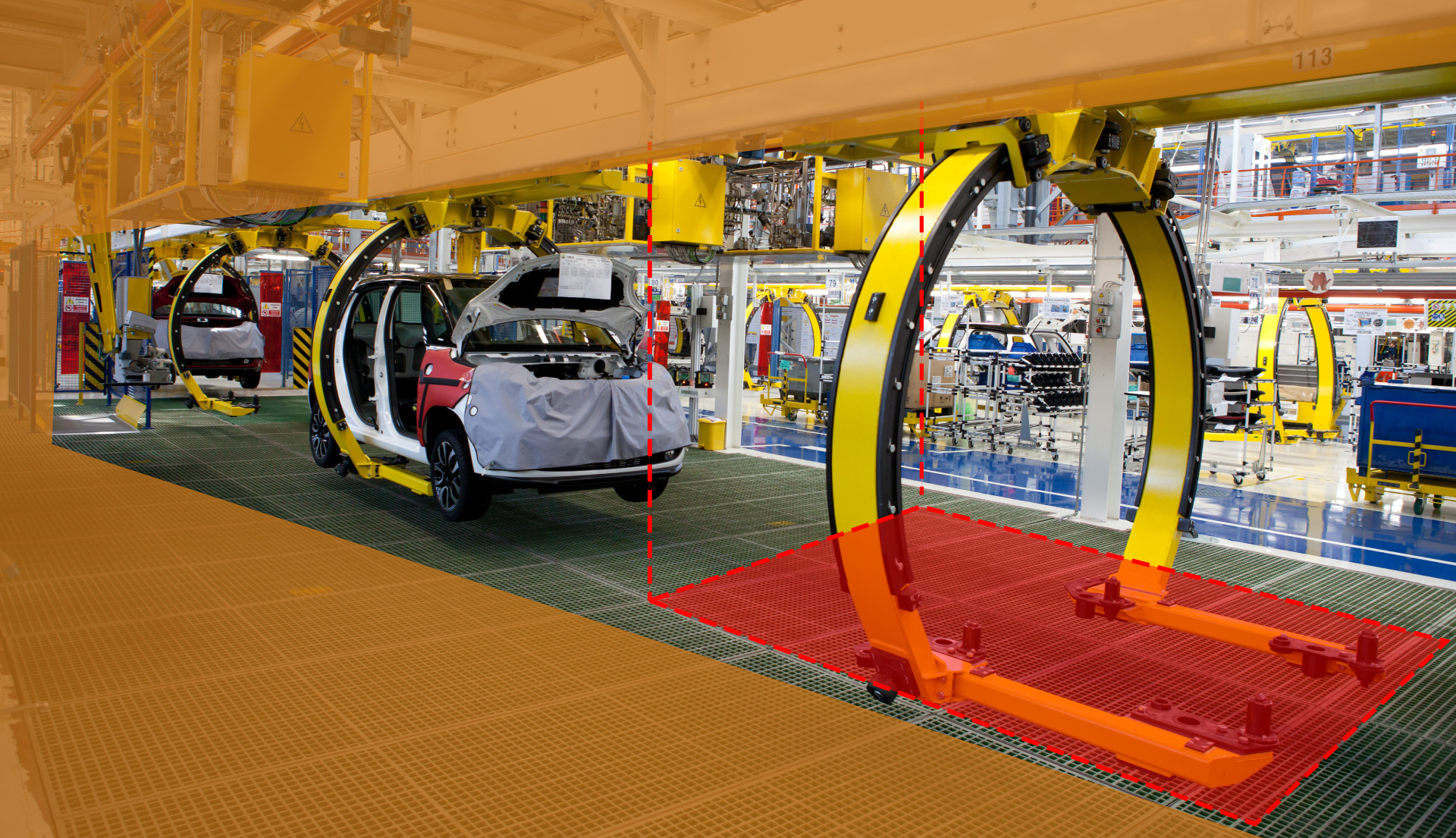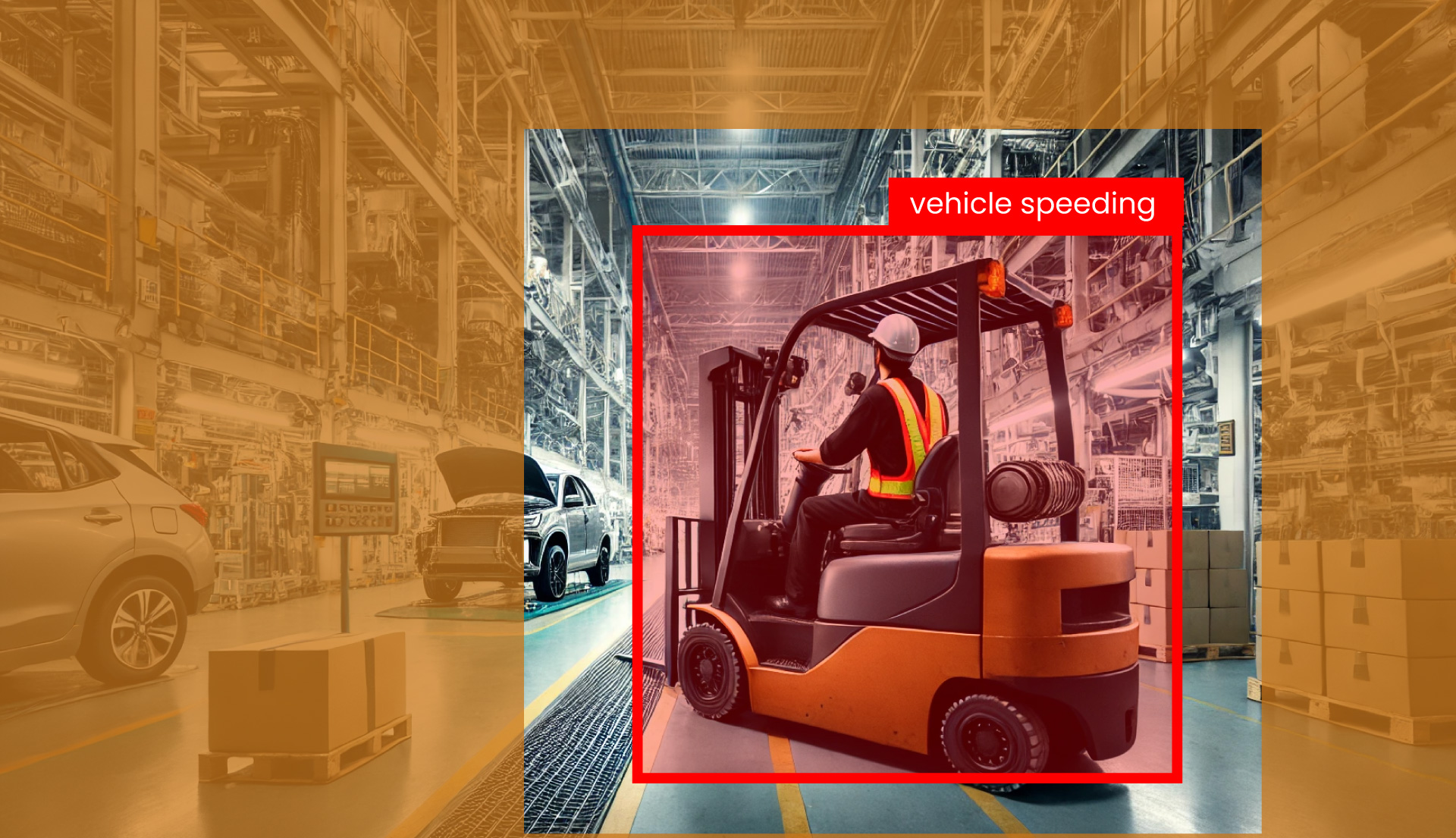Driving Safety and Security in the Automotive Industry with Vision AI
- Vathslya Yedidi
- September 9, 2024
Workplace safety and security in the automotive industry are essential to the well-being of workers and assets in manufacturing plants. Improper measures can have dire consequences that affect not only the workforce but also the success and integrity of the plant. Although safety regulations are important, the specific measures required in an automotive plant can vary widely depending on factors such as the size of the plant, the risks associated with its operation, its culture, and the effectiveness of existing measures.
As technology advanced in the 20th century, workplace safety hazards and threats increased dramatically, forcing industrial plants to focus on preventing injury and protecting material and information. Therefore, safety and security management have become a prominent issue in automobile manufacturing plants. Although much research has been conducted on safety practices in various industries, there is a significant gap in research that focuses on manufacturing environments.
The Industrial Revolution of the 19th century transformed manufacturing by introducing machinery to replace manual labor. These changes led to large factories where workers were highly supervised and specialized, and created new safety concerns.
Computer Vision is now playing an important role in improving safety in automotive manufacturing plants. Using the latest technology, Vision AI is improving safety practices through applications such as monitoring worker safety, detecting PPE, and ensuring compliance with automotive safety standards. For security, it is used to detect intrusions, prevent unauthorized access, and monitor sensitive areas of factories. This dual approach helps create a secure environment that protects human and physical assets
The importance of these innovations cannot be overstated. According to ILO, International Labor Organization, every year, 2.3 million people die because of work-related accidents or illnesses, and over 313 million workers suffer from non-fatal incidents that can lead to serious injuries or prolonged absences. This highlights the urgency for industrial plants of all sizes to prioritize plant safety
In this blog, we’ll explore how Vision AI enhances Safety and Security in the Automotive Industry and sets new standards for worker protection in this high-stakes field.
The Assembly Line Guardian: Worker Safety Monitoring Through Vision AI Eyes
Modern automotive assembly lines exemplify manufacturing efficiency while presenting numerous safety challenges. Computer Vision systems function as continuous monitors, overseeing every aspect of the production process:
PPE Detection: Ensuring Compliance in the Manufacturing Environment
In automotive plants, adherence to Personal Protective Equipment (PPE) protocols is critical. Vision AI for workplace safety ensures workers are adequately protected from head to toe.
Head Protection
Hard Hats & Bump Caps: The system automatically detects when a worker is not wearing appropriate head protection. This is crucial in areas with overhead conveyors, robotic arms, or when working beneath partially assembled vehicles.
Eye and Face Protection
Safety Glasses and Face Shields: Eye protection is mandatory in welding areas, paint application zones, and parts machining.
High-Visibility Apparel
Enhanced Visibility Clothing: Ensures workers remain visible in low-light areas or in proximity to moving vehicles, such as forklifts transporting car bodies or engine components.
Hand Protection
Protective Gloves: Monitors usage in areas handling sharp metal components, working with automotive fluids, or operating stamping presses.
Machine Area Controls: Enhancing Safety in Human-Robot Collaboration
In automotive manufacturing, advanced safety systems facilitate the coexistence of human workers and sophisticated robotic equipment. Computer Vision creates dynamic safety barriers like:
Monitors worker proximity to critical machinery, including:
- High-precision robotic welding arms
- Heavy-duty stamping presses
- Automated guided vehicles (AGVs) transporting vehicle components
- High-speed assembly line conveyors
Initiates immediate safety protocols:
- Instantly halts robotic operations if a worker breach designated safety zones
- Suspends body welding sequences to prevent potential injuries
- Pauses automated painting processes to avoid chemical exposure risks
Enforces stringent safety measures:
- Verifies proper implementation of lockout/tagout procedures during equipment maintenance
- Ensures compliance with industry-specific safety standards and regulations
- Logs and analyzes safety incidents to drive continuous improvement in workplace safety
These advanced controls enable automotive manufacturers to maintain a secure, efficient work environment where human expertise and robotic precision combine seamlessly.
Navigating the Plant: Automotive Safety Compliance Through Vision AI
Automotive plants are complex environments with distinct zones, each presenting unique safety challenges. Vision AI for workplace safety systems plays a crucial role in maintaining safety and efficiency.
Crane Area Safety
Overhead cranes are vital for transporting heavy components like engines, transmissions, and car bodies:
- Enforces crane fall zone protocols, restricting non-essential personnel access where suspended loads pose risks.
- Analyzes load securement in real-time, mitigating the danger of component drops during transit.
Optimizing Plant Traffic with Clear Vehicle Ways
Efficient traffic flow is essential, from forklifts carrying pallets to Automated Guided Vehicles AGVs moving partially assembled vehicles:
- Ensures unobstructed pathways for just-in-time component delivery to assembly lines.
- Prevents collisions between autonomous and human-operated vehicles through predictive trajectory analysis.
- Maintains clear emergency routes, critical for rapid evacuation during chemical spills or fire incidents.
Clear Paths for Safe Worker Transit
Amidst a maze of hoses, cables, and parts bins, walkway management is paramount:
- Detects obstructions like misplaced engine pallets or scattered fasteners that pose trip hazards.
- Ensures strict separation between pedestrian lanes and vehicle routes or robotic work cells.
Speed and Movement: Enhancing Production Safety
Speed Limit Detection: In a time-sensitive environment, safe speed management is crucial to
- Monitors AGV velocities during inter-station car body transport.
- Flags instances of forklift speeding in warehouses or near assembly areas.
- Detects vehicles exceeding speed limits in zones where worker-vehicle interactions are frequent.
Personnel Tracking and Counting: Optimizes workforce distribution while prioritizing safety and
- Monitors occupancy in high-risk areas like paint booths or battery assembly stations to prevent overcrowding.
- Tracks quality control inspector dwell times at each vehicle, balancing thoroughness with production flow.
- Oversees worker rotations to minimize repetitive strain injuries common in assembly tasks.
Securing the Perimeter: Beyond Safety
While focused on worker protection, Vision AI also strengthens overall plant security.
- Periphery Protection: Intelligent video analytics to monitor fence lines and entry points, immediately alerting security personnel to breaches or suspicious activities.
- Advanced Access Control: Implements facial recognition and license plate recognition technologies to manage entry for both personnel and vehicles, ensuring only authorized individuals access sensitive areas.
- Asset Tracking: Employs object recognition to monitor high-value equipment and materials, preventing theft and unauthorized movement of crucial components.
- Behavioral Analysis: Detects unusual patterns of movement or behavior that may indicate security threats, such as loitering in restricted areas or unauthorized access attempts.
- Smoke and Fire Detection: Rapidly identifies and alerts to the presence of smoke or flames, enabling swift response to potential fire hazards.
Real-World Impact: Transforming Automotive Manufacturing
The implementation of Computer Vision is making a real-world impact in automotive manufacturing, delivering notable benefits. It allows for immediate intervention when safety protocols are breached, such as when a worker approaches a robot welding cell without proper protection, which helps reduce accident rates. The technology also improves compliance with safety standards across all shifts, which is particularly important in 24/7 production environments. Manufacturers can proactively enhance safety measures and prevent future incidents by analyzing near-misses in high-risk areas like stamping plants.
These advancements minimize accidents and enhance overall productivity by improving workflows, leading to increased plant efficiency. Additionally, fewer accidents result in cost savings through reduced downtime, lower insurance premiums, and the avoidance of legal liabilities. This forwards a safety-first culture across the organization in the long term, setting safety practices from the assembly line to the executive suite.
The Road Ahead: Future of Safety and Security in Automotive Manufacturing
As technology evolves, we can anticipate:
- Predictive Maintenance: It involves using Computer Vision to detect wear on assembly line components before they fail, preventing potential safety hazards.
- Augmented Reality Integration: This involves providing real-time safety information to workers through AR glasses, highlighting potential hazards or safe paths through the facility.
- Autonomous Safety Systems: Robot assistants that can physically intervene to prevent accidents, like clearing a dropped part from a walkway or securing a spill in the battery assembly area.
Conclusion
Computer Vision is making the automotive manufacturing process safe and secure and changing the entire production. With constant intelligent eyes all over the production process, it will enable much safer, more secure, and efficient plants. When this technology comes forth, such accidents will be exponentially impossible to occur in automotive manufacturing.
It will be successful only with thoughtful implementation, continuous refinement, and a commitment to using powerful technology to augment rather than replace human workers. Under the watchful eye of Vision AI, the automotive industry is clearly on its way to increasing safety and productivity, paving the way for a new era of manufacturing excellence.
Ready to use Vision AI to improve worker safety and security in your facility? Let us assist you in building a safer, more secure, and efficient manufacturing environment. Contact us to understand how this solution, Computer Vision technology, can disrupt your automotive safety practices.





